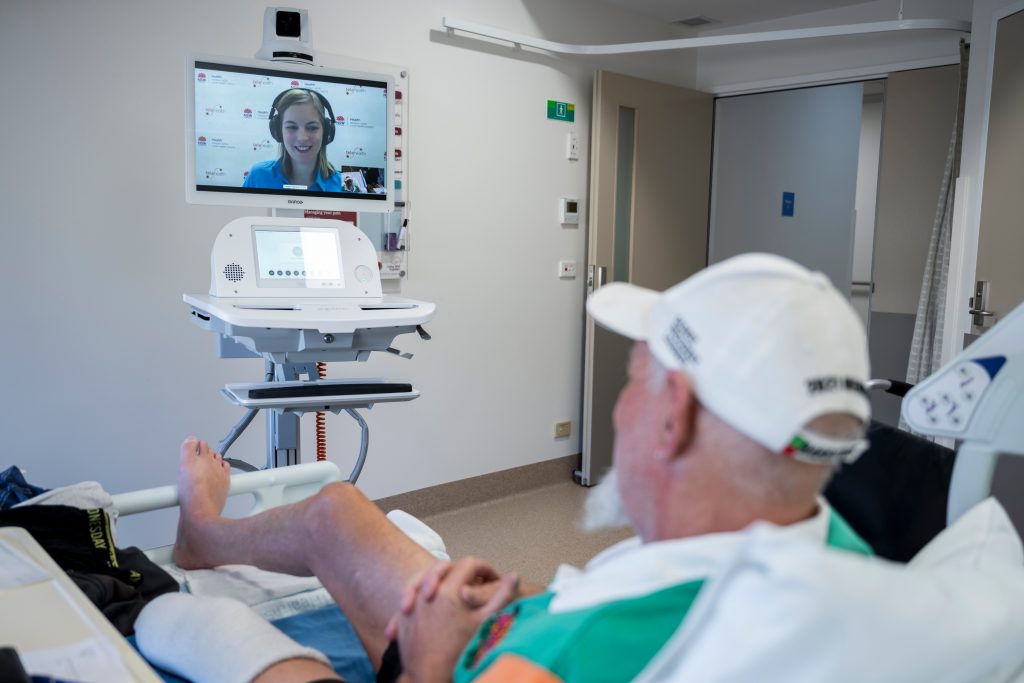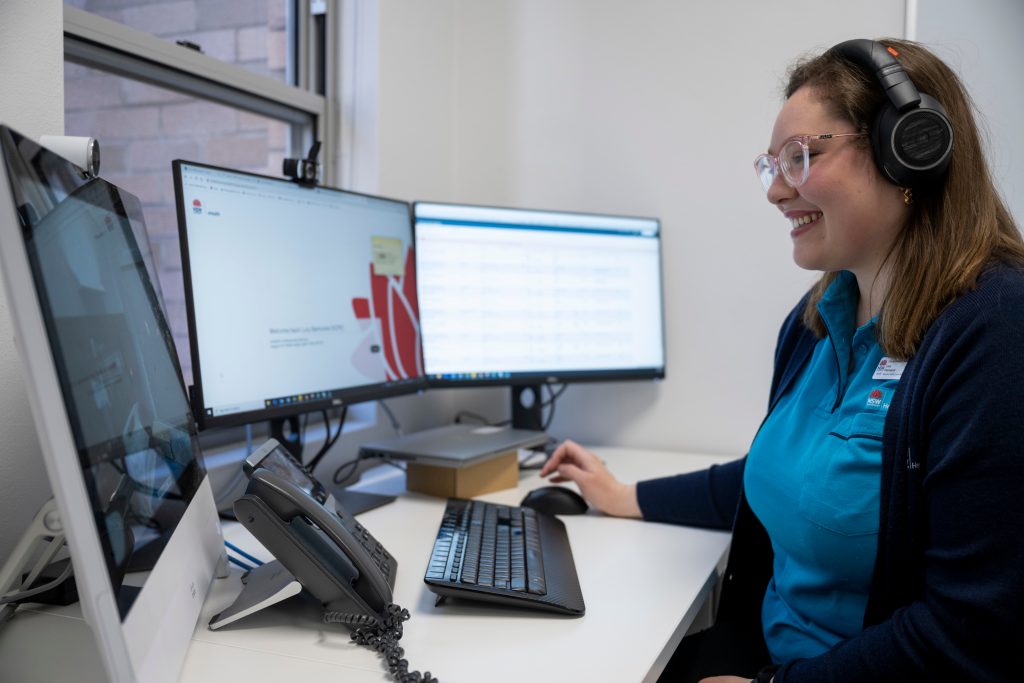Virtual pharmacist sessions for the outback and bush
Telehealth sessions with pharmacists have now become accessible for hospital patients in rural and remote settings due to a successful trial ensuring tailored online sessions for medication management, education and support.

In ancient Egypt, medicines containing everything from herbs to crocodile fats were prescribed by physicians. We know this from the 700 medicinal remedies set down in a lengthy papyrus scroll dated around 1550 BC. These are the earliest record of prescriptions. Asthma, for example, was treated with therapeutic plants heated on bricks, then inhaled by the patient. Cut to the present, and pharmacists are the modern experts in pharmaceuticals. Their specialist knowledge makes an enormous difference to the health outcomes of patients. For this reason, their direct and ongoing input is very important to patient pharmaceutical care. Yet in hospitals and multipurpose health services in rural and remote regions, smaller units and smaller teams mean that patients often don’t have this access.
With the help of a NSW Health Translational Research Grant (administered by the Office for Health and Medical Research), Dr Shannon Nott set out to address this gap. He is Rural Director of Medical Services for the Western NSW Local Health District (LHD), which covers almost 280,000km2 and serves a population of more than 250,000 people. Together with his dedicated clinical team, Nott created the Virtual Clinical Pharmacy Service (VCPS). This telehealth approach was trialled in small rural communities, such as Bourke and Narromine, where it proved very successful. The aim of translational research like this is to build understanding about whether and how innovations can work in real healthcare settings. It can accelerate how quickly health and medical research findings are rolled out to improve the healthcare system, patient outcomes and population health.
As the largest Local Health District in NSW, the Western NSW LHD contains some of the most remote bush and outback regions in the state. So, its rural hospitals, multipurpose facilities and nurse-only clinics are often geographically distant and can be quite isolated. In those healthcare settings, Nott led the implementation, design and evaluation of the telehealth program. “After trialling the VCPS it was so beneficial that the approach became business as usual across all of western NSW,” Nott says. To date, the successful service has led to multiple publications and also won the Society of Hospital Pharmacists national award for Hospital Pharmacy Team of the Year in 2021.

Safer pharmaceutical care
Medication misadventure is one of the largest contributors to unintended harm for hospital patients throughout the world. It involves incorrect drug dosages (too high or too low), unwanted medication side effects and problematic drug interactions. To minimise these issues, the World Health Organisation (WHO), has outlined ‘best practice’ for the prescription and administration of medications in healthcare settings. These evidence-based guidelines aim to increase the safety and quality of health services across the globe.
Integrating clinical pharmacists into healthcare settings is a pivotal component of these WHO healthcare initiatives. “These include best possible medication history, which involves taking a comprehensive and accurate list of current medicines that a patient has been prescribed as well as issues such as allergies or adverse drug reactions,” Nott explains. “Setting aside time for medication reconciliation on admission and discharge is also important. This means that the pharmacist ensures that before leaving hospital a patient has all the correct medications they require and understands how to use them safely and effectively.”
Employing clinical pharmacists in hospitals has been found to reduce preventable harms and lower the rates of unsafe medication practices and medication errors in healthcare facilities. In metropolitan hospitals, embedded pharmacists usually see the patient when they are admitted and discharged and may also see them bedside, during their stay. So, ensuring access in rural and remote healthcare settings as well, is extremely important to patient equity and outcomes.

Improving pharmacist access
“Some of the hospitals in these areas are very small and only have one or two in-patient beds,” says Nott. “Some of them may only see five patients over 24 hours through their emergency department. They may also struggle to fill all staff positions as it can be difficult to draw healthcare workers to rural and remote regions. So, having a single pharmacist per hospital or healthcare service is simply not sustainable.”
To address this issue, Nott set out to devise and deliver a sustainable method for providing proactive pharmaceutical care, consultation and review for patients in the outback, bush and country. A leading Australian and international authority on rural healthcare, Nott is adept at partnering health services and linking multidisciplinary teams. In recognition of his work, he received the NSW Health Collaborative Staff Member of the Year award for multiple innovations he has implemented in rural NSW. Nott is also an expert at devising technology-enabled solutions to improve health system delivery. With his experience in digital health and virtual care, he supported a state-wide COVID-19 approach to virtual care as Clinical Director of the NSW Virtual Care Accelerator. This role then transitioned to Lead Medical Advisor for Virtual Care for the NSW Ministry of Health.
Trialling telehealth integration of pharmacists
Nott’s combination of rural health and telehealth expertise informed his development of the Virtual Clinical Pharmacy Service (VCPS) which was trialled in 2019 and required minimal additional resources. Several years later, the program is providing safe and high‐quality medication management, regardless of the size of the hospital where the patient is admitted. “I thought it was a bit of a ‘no brainer’ to develop a model that allowed us to integrate clinical pharmacists to the bedside, offering virtual clinical pharmacy consultations and services where there is no onsite access,” Nott explains. “The approach complements existing medication management activities by providing telehealth sessions for patients. Its objective which has clearly been met, has been to minimise medication risk and increase patient safety at all steps on the medication management pathway, from admission and hospital stay to discharge or transfer to another health service or the home.”
Patient bookings for the virtual pharmacist telehealth sessions are made via the Electronic medical record system (eMR). They can be scheduled by clinicians, such as doctors and nurses as well as allied health professionals, such as physiotherapists and aboriginal health workers. VCPS staff can also proactively review patients.

Improved patient access and care
The VCPS trial showed improved compliance with National Safety and Quality benchmarks and improvement in medication safety and efficacy. The service also adheres to the new Policy Directive for the Preparation of Pharmaceutical and Advanced Therapeutic Products, which outlines minimum NSW Health requirements in areas such as infrastructure, staff capabilities, regulatory and practical governance. “The input of pharmacists within multidisciplinary teams provided patients with comprehensive medication assessment and collaborative care planning,” Nott points out. “The telehealth pharmacist consultations also increased patient involvement with their medication regime, boosting their understanding, engagement and adherence in relation to their medications. Patients, their family and carers also reported that they found the telehealth consultations very helpful and that they improved their hospital experience,” Nott adds.
In addition, continuity of care improved because patients and clinicians were provided with up-to-the-minute medication information when medical care was transferred. “This is very important because transitions of care are risky times for patients when they are moving between general practitioners and emergency departments or from GPs to acute wards and vice versa,” Nott explains. “The pharmacist consultations help to minimise risks such as drug interactions between several or more medications, adverse reactions due to underlying health conditions and patients being inadvertently restarted on drugs that were ceased before because they were problematic or ineffective. The program has also led to better medication reconciliation, which means that the medicines the patient should be prescribed match those that are prescribed. The service is also person-centred and patients receive patient-friendly medication lists and there is shared decision-making about medications between pharmacists and patients.”
The Virtual Clinical Pharmacy Service also provided further benefits. Through the program, nicotine replacement therapy was offered to patients via brief smoking cessation interventions. Staff education telehealth sessions by pharmacists were also available monthly or as needed and patient education sessions about their medications were also on offer. In addition, during their virtual sessions, pharmacists have been able to engage in antimicrobial stewardship review. “This is very important as it means that they ensure the right antibiotics are prescribed for the right infection,” says Nott. “It also means that wherever possible, more targeted antibiotics are used instead of broad-spectrum antibiotics, which will help reduce the risk of bacteria becoming resistant to antibiotics.”
As a part of this translational research, the program was also trialled at Royal Prince Alfred hospital in an orthopaedic geriatric ward, where there was no regular on-site pharmacist. The successful model has also been used as the basis for virtual pharmacist consultations offered for mental healthcare in the Hunter New England area. As the VCPS program was such a success, it is likely that it will be rolled out to other rural and remote hospitals in NSW in the near future.
See here for more information on the Translational Research Grants Scheme and on the
Policy Directive for the Preparation of Pharmaceutical and Advanced Therapeutic Products.
Updated 1 year ago